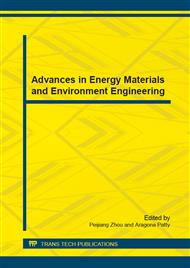p.651
p.655
p.660
p.667
p.678
p.682
p.686
p.690
p.694
The Simulation Study of Permanent Magnet Synchronous Motor and its Hysteresis Current Control Based on AMESim
Abstract:
The paper gives a brief introduction of the permanent magnet synchronous motor (PMSM). The author gives the mathematical model under the simplified conditions and the PMSM rotor and stator impedance matrix. Besides, the author used AMESim to build a synchronous motor model on the basic of hysteresis current control strategy and set the parameters. A simulation was carried out and advantages and disadvantages of hysteresis current control strategy were analyzed.
Info:
Periodical:
Pages:
678-681
Citation:
Online since:
December 2014
Authors:
Price:
Сopyright:
© 2015 Trans Tech Publications Ltd. All Rights Reserved
Share:
Citation:


